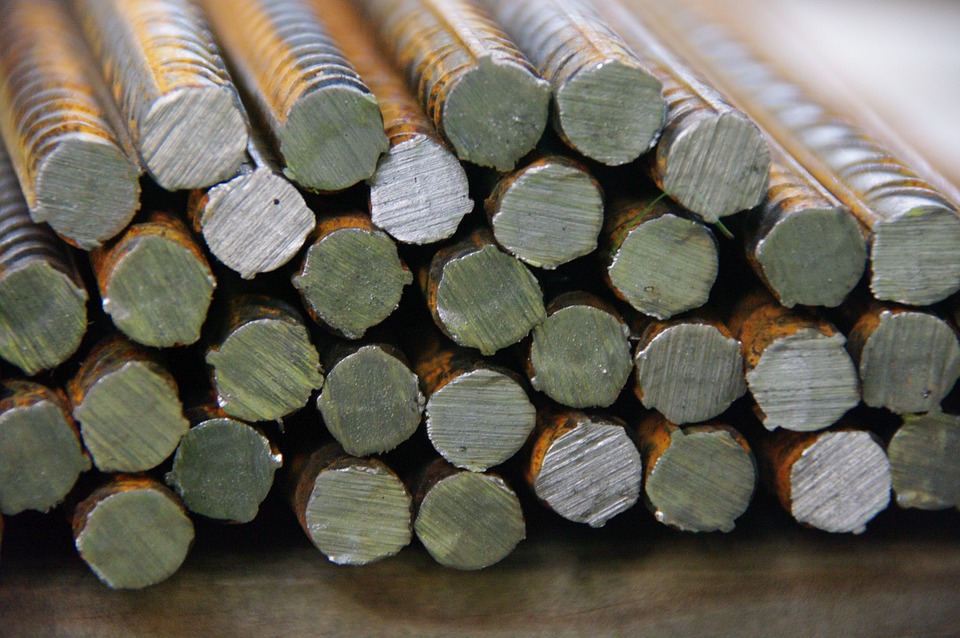Rebar Markings

Rebar is just a basic metal rod, right? You’re thinking you could probably throw an old golf club in the foundation and get similar results and save a couple bucks and clean out your garage at the same time. I feel you. But unfortunately, it isn’t going to fly with the inspector. Rebar definitely has its own unique look and it would be hard to mistake a stick of rebar for anything else, but there still needs to be a way to identify a piece of rebar, especially when you consider rebar can be made from different types of steel and can have varying strength properties. So, the American Society of Testing Materials (ASTM) came up with 4 markings on rebar to help answer the questions of:
- Which mill produced this piece of rebar?
- What is the diameter size?
- What type of material is it?
- What grade is the material / how strong is it?
For the most part, the above 4 questions are the majority of what someone would want to know about a stick of rebar. Let’s go through each marking in more detail and discover its relevance.
1: Production Mill
Why would someone want to know the birthplace of a piece of rebar? Maybe to compare 23andme reports to see if he or she has any genealogy in common with a stick of metal? While some people on the job site may have similar IQs, it’s unlikely the genuine interest of commonalities between family trees is the reason. The truth is that the mill producer has a wealth of other production data. In the event that an engineer or government authority wanted more information on a batch of rebar, the mill and fabricator (hopefully) have heat numbers and mill test reports. This data should normally accompany each load as it is delivered, however rarely is this data ever kept or analyzed on site. But in the event of an investigation or post build engineering study, the rebar fabricators and mills should have enough data on file to track down this information. The information found on these mill test reports likely warrant their own dedicated article post, but in general they provide material properties (e.g. carbon, sulfur, etc.) as well as material test results, such as stress, elongation, and yield.
2: Diameter Size
You’ll see a number between 3 and 11 stamped on the rebar (granted, you could see #14 or #18, but most likely not). This number represents the diameter size in terms of 1/8th of an inch. For example, a #7 size rebar would indicate that the diameter is 7/8th of inch. Remember that here in America, we like to be complicated and difficult. So, don’t let that fancy pants superintendent confuse you when he tells you to grab that ½” rebar. Pick up that #4 rebar and deliver it with confidence. If that statement just confused you, grab your kid’s 5th grade math book or move to Europe. One day America will switch to the metric system. One day…
3: Material Type
Metal is metal, right? It’s all heavy, hard to bend, and can hold stuff up. When your dear old dad said they don’t make cars like they used to, he wasn’t kidding. Many companies are pushing the limits on material science and looking to make things cheaper and even lighter while still meeting the minimum structural requirements. Rebar is no different. Rebar materials come in all sorts of flavors to satisfy different construction needs. The majority of the time, you will come across basic carbon steel rebar, marked with an “S” and is the vanilla flavor of the rebar materials. It is made from melted down scrap metal and will typically be your cheapest option for standard structural purposes. For special circumstances, when you need higher tensile strength or higher corrosivity resistance, you can splurge and upgrade to stainless. Other times, you’ll need to weld rebar to structural beams or angle iron and you’ll go for the A706 material, marked with a “W”. In summary, the materials and their corresponding marks are below:
S – Carbon Steel (A615)
A – Axle Steel (A996)
W – Low-Alloy Steel (A706)
SS – Stainless Steel (A955)
CS – Low-Carbon Chromium (A103)
4: Grade
The grade of the material represents how much tensile strength that material has in thousands of pounds per square inch (psi). The options for this mark are 40, 60, 75, 100, 120. I won’t get too deep on the science behind tensile strength, but as you can imagine, the higher the number the stronger it is. Similar to the majority of rebar being made of carbon steel material, the vanilla flavor of grade is 60, meaning it can withstand 60,000 lbs. per square inch of cross section before failure (sort of like a rope failing from tug of war). If you are saying "my rebar has no grade mark", it is because the production mill decided to mark it with “grade lines”. These are lines running along at long axis of the rebar. Below is the code you will need to decipher the puzzle. Why they ever chose to do this, I will never know. It’s not like anyone would ever confuse the diameter size and material grade. Ha. Imagine a piece of rebar with diameter size #60. That's 7.5" in diameter!
Zero Lines – Grade 40
One Line – Grade 60
Two Lines - Grade 75
Three Lines – Grade 80 or 100
Four Lines – Grade 120
There you have it. It’s not Rocket Science, just Material Science. Feel free to use the above information to impress that fancy pants superintendent of yours.

This is brilliant. Well said.
Impressive. If you’ve ever talked to these guys, they know their stuff.
There is definitely more to rebar than I thought. Great article.